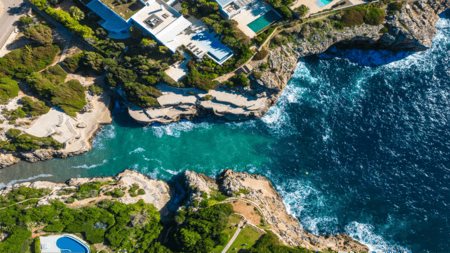As rural and urban development increases, so does the need for the protection of the environment. The dynamics of community based conservation follows an age old practice seen across the world. Where the co-operative environmental management of areas through conservancies have been known to achieve what many regard as impossible.
The conservancy concept can be adopted by representing the collective efforts of private property owners and residents, through voluntary work on a not for profit basis. Best practise takes place through applications of existing environmental principles of nature conservation authorities in an area.
The National Association of Conservancies South Africa (NACSA) defines a conservancy as:”A registered body with the local Conservation Authority, a voluntary association between land users and landowners who, co-operatively wish to manage their natural resources in an environmentally friendly manner without necessarily changing the land-use of their properties.” Provincial conservancy associations belong to NACSA whose network represents approximately 750 conservancies nationally, who own and manage about 30 million hectares of land –about five times that of state controlled conservation areas.
Although a preference for rural landscapes within idyllic surroundings on large pockets of land is commonly associated with wealth, any number of complex environmental issues may occur. Whereas many city and suburban dwellers attach great value to living within close proximity of public open spaces that often leads to private property owners preserving the ‘green lungs’ of cities.
The protection of rural land outside a formally protected national park was first seen when the Balgowan Conservancy was formed in 1978, by a group of local farmers in co-operation with the then Natal Parks, to protect game on farmlands.
Early actions of Everton in KZN as the country’s first registered urban conservancy in 1991 became a landmark when a large wave of property development took place five years later.
SA’s first coastal conservancy, Zinkwazi on the KZN North Coast has merged with several other smaller conservancies. The coalition of 16 conservancies in the KZN Midlands now serves the purposes of greater clout, more funding, allocation of grants and operational action.
The NACSA Conservancies Handbook published online, guides the formation process, from starting, registration, constitution, and meetings. The basic management plan provides information on how to achieve objectives such as rehabilitation, environmental centres, projects, membership and fundraising. Areas also covered are increased awareness, education, monitoring, marketing and advertising.
Common Focus Areas of Conservancies
Productive land, development, changing urban landscapes
Threats to biological biodiversity
Water security
Fires, floods, erosion, pollution
Implementation of legal controls
Neighbourhood watches
Cohesion between planning authorities, developers and property owners
Waste recycling drives
Conservancy actions
Noordhoek Conservancy prioritises heritage, mine monitoring, and public common areas, while actively supporting community driven projects, such as the conservation initiative ToadNUTS for identification, monitoring and protection of the rare Western Leopard Toad species.
Mountridge Nature Conservancy in the Vaal Triangle prioritises crime prevention for the protection of families and properties by nurturing good neighbourly relations and law enforcement through SAPS.
The Greater Simonsberg Conservancy in the Cape Winelands oversees biodiversity agreements between landowners and conservancy agencies to protect rare species of fauna and flora.
Clansthal Conservancy monitors integrated marine and land protection along the South Coast of KZN.
Illustrating global urban watchdogs at work is the Central Park Conservancy in New York. A group of volunteers, overseen by the city’s park and recreation department, have maintained one of the world’s largest green public open spaces, since 1980. Now home to lakes, ponds, a reservoir, more than 25 000 trees, birds and mammals, it attracts thirty-five million visitors annually.
Although this refined urban lifestyle is synonymous with hefty price tags for property and taxes, private property owners participate in the environmental protection of a national heritage site that measured 778 acres when it first opened in 1857, now measuring 840 acres.



